For many riders the days of learning to post the trot are relics of the past. The hours spent listening to our instructors shouting “up down, up down” (as if that made it any easier) are over. Our time is now spent in better pursuits, such as learning to jump trickier courses or trying our hand at more challenging lateral work.
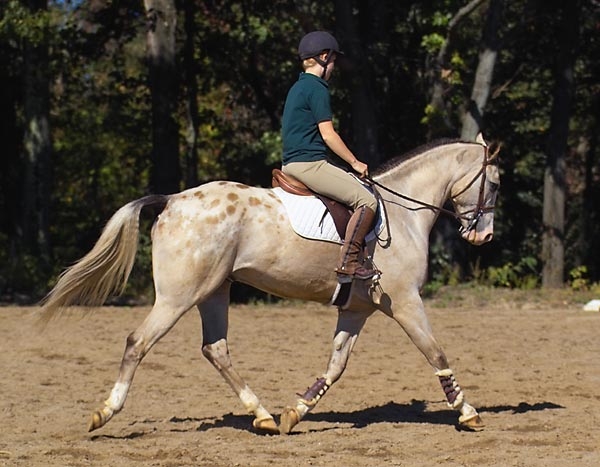
AppyEnglishHorse by eXtensionHorses on flickr/CC BY-SA 2.0
But the posting trot still deserves our attention. It’s an important skill to perfect, particularly since we use it so much of the time. As you fine-tune your position, you’ll be surprised at how much better your horse responds. An improved posting trot will give you steadier hands, better control of your leg aids and a softer seat.
Stylistic Differences
There is a difference between a hunter rider’s posting trot and a dressage rider’s. Yet dressage riders often post like hunter riders and hunter riders often post like dressage riders. Pay attention to which style you’ve adopted, as it does have an effect on your horse.
Hunter Style:
A hunter rider should lean forward and post forward and backward. “The angle of the shoulders in the posting trot should be about 30 degrees in front of the vertical,” says Scott Hofstetter, top hunter rider, coach and judge from Ocala, Fla. “In this way, you can move with the motion of the horse, which will allow your horse to trot out better.” Hunter riders also use the posting trot as a tool to get off a horse’s back and allow him to stretch his neck out and forward. If a hunter rider posts up and down over the vertical, such as from a chair type of seat, the rider can land quite hard on the horse’s back, making him reluctant to take a bigger stride. “We want our horses to be in front of the vertical and leading with their noses out, as opposed to a dressage horse that is more flexed,” adds Scott.
Dressage Style:
Dressage riders, on the other hand, should sit over the vertical with shoulders and hips in one line. Their thighs should hang as straight as possible with the knees slightly bent. The angle of the shoulders should never come forward but remain straight. The hips should rise out of the saddle and forward over the pommel and land back in the saddle in the same place. In this position, the rider is able to keep the lower leg quietly against the horse’s barrel throughout the posting trot so that he or she can use the lower leg when needed. This position also helps the horse arch his frame and encourage his haunches under.
Top Six Posting Faux Pas
1. Problem: A Heavy Seat
Culprits: Hunter Riders and Dressage Riders
“I often see riders posting straight up and down in a chair seat rather than forward and back, and that causes them to land heavy on the horse’s back,” says Scott. This position also makes it difficult to balance, which causes hands to bounce and jar the horse’s mouth.
Cure:
Stiffness is often the problem. For the hunter rider, pick up the posting trot, and with one hand grab your horse’s mane about halfway up the neck (make sure to keep your shoulders square). This will pull your shoulders forward to the correct 30 degrees and help you feel how to land in the saddle softly. Maintain this position for 15 to 20 strides and then let go of the mane. Repeat if you fall out of position.
For the dressage rider, a stiff, closed hip angle is usually the problem. Think of the posting trot originating from a kneeling position instead of a sitting position. Your knees should point to the ground, and your hip angle should open as you rise and close as you sit. Think about someone pulling your belt buckle forward as you rise and then pushing it back as you sit. Don’t let your knees shift around. Keep them pointing toward the ground as best as you can.
2. Problem: Incorrect Leg Position
Culprits: Hunter riders
“If your lower leg is too far back, your upper body will fall too far forward. If you ride with your leg in front of the girth, then your upper body will be too far behind the vertical,” says Scott. “If your leg is at the girth (essentially the middle of the horse), then your shoulders will be in the right position.”
Cure:
Stand in your stirrups and begin trotting. You can stand either straight up or in two-point. If you feel balanced, your legs are in the correct position.
3. Problem: Eyes Down
Culprits: Hunter and Dressage Riders
“Riders tend to get absorbed at the posting trot and end up staring down to the inside of the ring or at their horses’ necks. It’s an easy habit to get into and a hard habit to break,” says Scott. Also, eyes down will lead your upper body forward, and before you know it you’ll be slumping.
Cure:
Practice looking ahead by gazing at a focal point ahead of you, such as the tops of the trees or the roof of a building. This will bring your eye level up and will keep you from falling forward or slumping.
4. Problem: Incorrect Arm and Hand Position
Culprits: Dressage Riders and Hunter Riders
Your hands and arms shouldn’t move with your seat in the rising trot. They should remain stable and separate from your body. If you take your hands and arms with you as you sit, you’ll have a very unstable contact-loose then tight. This will cause your aiding system to be haphazard at best.
Cure:
Concentrate on keeping your arms and hands in the same position as you rise and sit. It helps to think about moving your hips between your elbows as you rise.
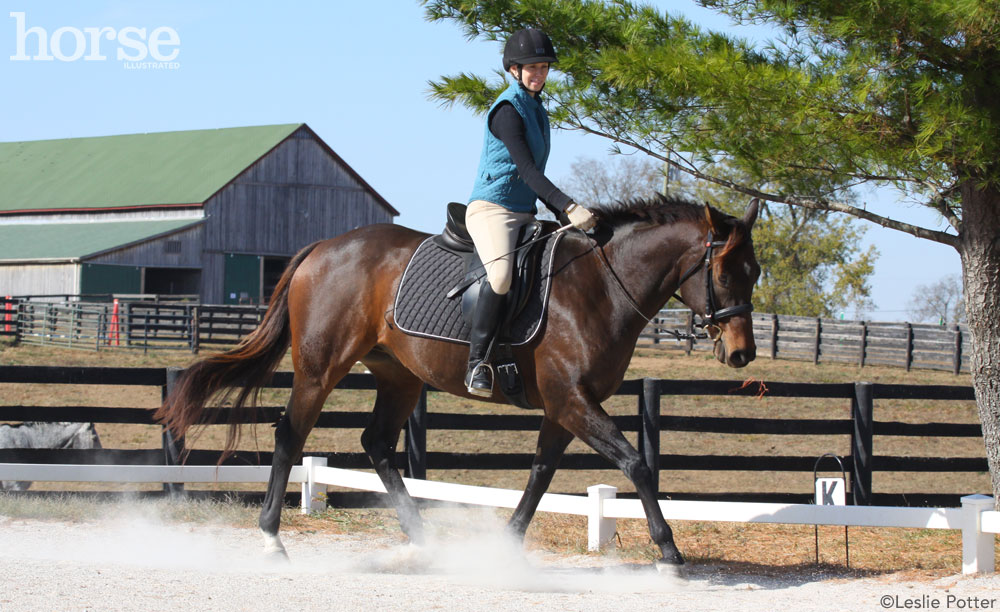
5. Problem: Involuntary Leg Movements
Culprits: Dressage Riders
Have you ever heard your trainer drone on and on about your constant kicking or “nagging” with your leg, but you know for sure that you haven’t been? If your upper leg is tight and gripping, your lower leg will pop away from the horse’s barrel as you rise and strike against it as you sit. Sounds a bit like kicking doesn’t it? Well, it looks like it, and your horse won’t know the difference between a honest-to-goodness leg aid and a mistaken thump. It’s very difficult to give a clear aid if your leg is always involuntarily bebopping against your horse’s side. To the horse it feels much like communication through static.
Cure:
This is a case of too much tension in your upper leg and not enough in your lower. Keep thighs and knees soft and lower leg on. Focus on holding your calves lightly against your horse’s barrel, and don’t let them come off as you rise. Have a friend point out when your legs are moving and make a mental note of how this feels.
6. Problem: Can’t Get the Right Angle
Culprits: Hunter Riders
If you were told there would be no math involved, and you’re slightly stumped as to what a 30-degree angle is, you may get stuck riding too far forward or not enough.
Cure:
“An exercise that I find beneficial is to practice changing the angle of your upper body in the posting trot,” says Scott. “This will help you feel when you are in the right 30-degree position, where the vertical is and what it feels like to be behind the vertical. Pick up the rising trot and come forward to what you think 30 degrees is.” When you’re in the correct position, you’ll feel your horse relax and move forward and feel your seat get lighter. Now come back on the vertical, which will help you understand where the middle point is. Then lean back behind the vertical. Repeat the exercise. You’ll soon get a feeling of what angle you are in.
You’ve come a long way from the first ups and downs of learningdiagonals, but there’s always room for improvement. Check yourself for these six faux pas; the results should show in better equitation, and most of all, in your horse’s response.
Further Reading
Look Ma, No Stirrups!
Sitting Trot in Style
Award-winning writer Sharon Biggs is a frequent contributer to Horse Illustrated and has written for many other equestrian and women’s magazines in the United States and the United Kingdom. She is the author of “In One Arena: Top Dressage Experts Share Their Knowledge Through the Levels” (Half Halt Press).
This article originally appeared in the April 2004 issue of Horse Illustrated. Click here to subscribe.

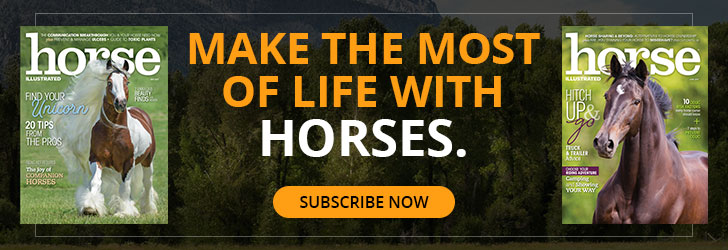
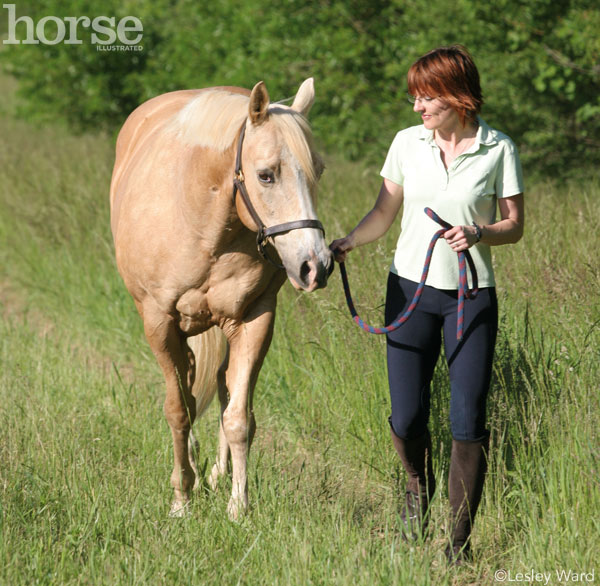
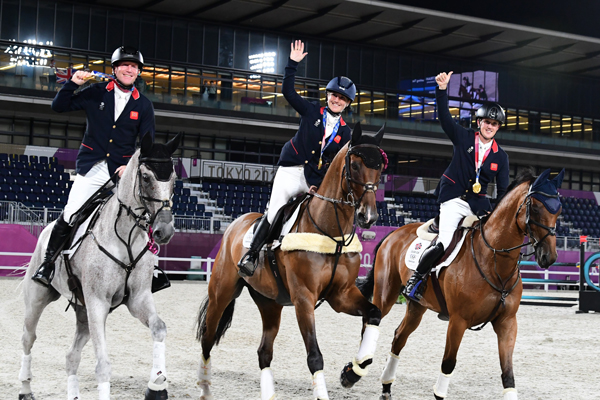

I’ll try this in my next lesson!
Good Job helps me perfect it thanks
this article is very true!! I do see many riders do what is described here, even myself!! after prcticing for a while my instructor asked me how i had become so good!!
wow!!!!! that totally pointed out my problem. ill try it in my next lesson!!!
Thanks for this great article!! It will really help me ride a better posting trot! I CAN’T wait to try it the next time I ride!
This will help me because I don t have very good blance in english and it will help on my NEW HORSE
Thanks for the article!! I have been having a hard time keeping my calves tight and my thighs loose. This will definetly help me out!
Hi,This article really helped me prefact my trot. My instrutor is defintly not yelling at me as much!!!
this really works!
This article was helpful but it would be more benefitail if you had pictures or a video of Scott Hofstetter or one of his students demonstrating the perfect hunter post and dressage post.
okay this was scary! lol exactly 4 out of the 6 things listed, i do/have done. its crazy. my legs are ALWAYS moving.. even after 8 years of riding. and a heavy seat it the worst of it all. this was a TREMENDOUS help for me! thanks horsechannel!
I think that it helped.. me with my postin.. even when my horse stummbles or trips i now can keep my balance!!!! 😀
I can do a lot of these! I’m good at looking up and keeping my hands steady, but I’d say that the one main thing I need to work on is recognizing and identifying my angles. I’ll work on that! Thank you so much for this article. I have a lesson tomorrow and I’ll try it out! Hope it benefits. I’ll let you know! =D
This is very helpful. Thanks 🙂
Thanks, these are great tips
I was wondering if there is something you can say to keep you in rhythm with your horse when your posting other than up,down,up,down.
Enjoyed the tips on posting and the reminder to look where I’m going! I’m an old cow girl learning dressage with the help of a great teacher and training my (previously western) QH mare dressage at the same time. I keep telling myself, “I will look forward”, it’s hard sometimes because I’m looking down to see if she is in frame; instead I can just need to “feel” it. It’s so obvious when she’s in nice and round she feels so soft and supple.
If “up, down, up, down….” doesn’t work for you, or you’re trying to make things a bit more fun for younger riders try experimenting with fun statements such as “lemon(up) and lime(down)” they sound much less like commands and therefore much nicer on the ear. if you’re unwilling to go with such informal words, or it seems too far-fetched, a simple “a and b” or “1 and 2” will do the trick as well
Great article. I’m going to show it to some of my students.
I found that with some of my students “up, down, up, down” encouraged up and down over the vertical post. With those riders I use “front, back, front, back”. It works with both hunter and dressage riders. Since it can encourage both the forward and backward movement of the hunter rider or the front and back pelvis movement of the dressage rider.
This helped a lot! I just started hunter Jumper and my trainer teels me that I’m still posting straight up and down. I didn’t know how to fix it though. I think my horse likes me better too.
this article realy helped me. on vido i was alwas going over by pommel and landing half out of the saddle on lenny i always joggled with this info i cant wait to stun my trainer macxine phlip
This article has lots of useful info!
This article was so helpful. I haven’t taken lessons in years and know that my posting trot isn’t up to par. This gave me some great tips to make my horse feel more comfortable. I definitely have a dressage style post even though I’m a hunter jumper and have never taken a dressage lesson in my life (though I would love to.)
I didn’t realize there was an actual difference between how a dressage rider posts and a hunter posts! Thanks for the information!
Hopefully, I can practice this posting problem I have. Most likely I will have to come back and reread it again, and again.
I love this article. I’m a western rider and have had several knee surgeries. I’ve lost all muscle tone & strength in my legs because of it. I’m going to try these exercises.
this was so helpful to me!!!!!!!!
thank you for that article! My sister said to post leaning forward, but I really didn’t understand exactly what that meant.
What a great article. I never felt I had any trouble posting at the trot but these points have caused me to reconsider. I’ll check it out next time I ride.
I’ve ridden hunters for a while and I just switched over to the dressage world last year 🙂 It’s so hard to fix the way I post now! My instructor says I still post from front to back, and this article is going to help me fix that.
This article might help me tackle some of my posting flaws…I still have trouble keeping ryhthm and the correct position when transitioning from post-to-2-point and back to posting again after a jump…we have just started jumping in our lessons (I am a primarily Western rider) and some of your styles are completely different from mine!!LOL…Anyway,I should get to reading this article and start hoping for better weather so my horse and I can practice on our home-made “cross-country/hunter jumper course”(it’s a course that I made by dragging logs over different spots on my trails and I’m going to make some jumps to set up in the field…once it’s not freezing outside!)
This helped me alot!
This is a very informative and helpful article. Thanks